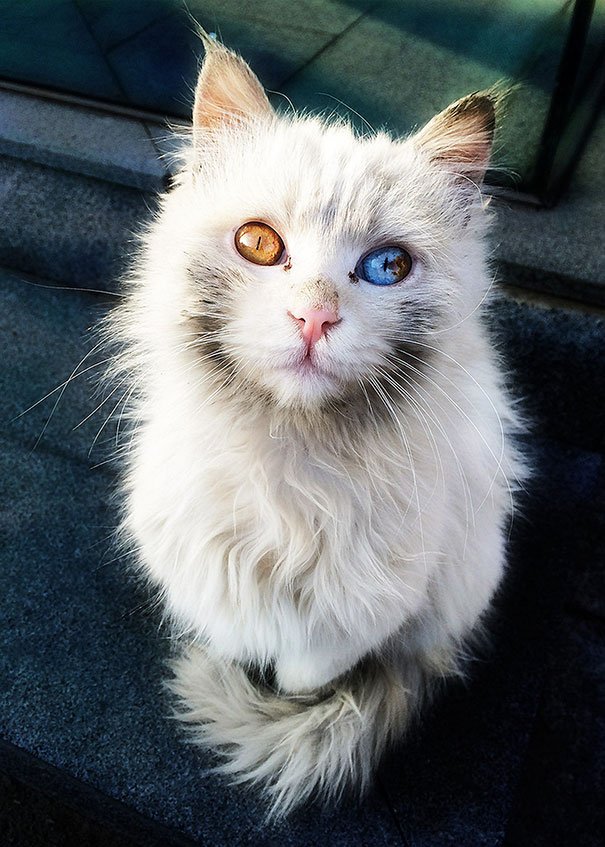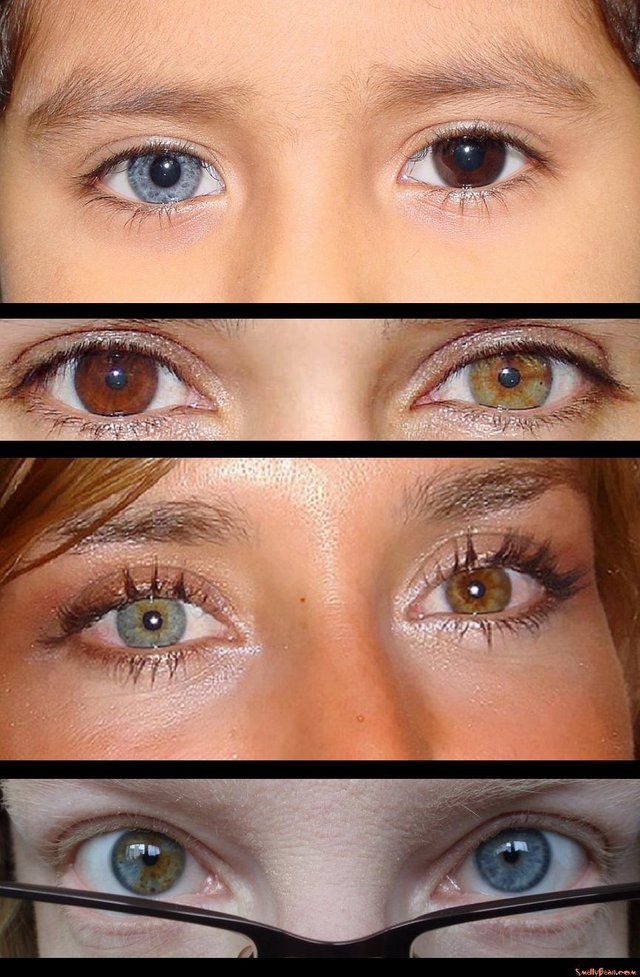Heterochromia
Heterochromia

Around the age of 6 months, the eyes have their final color. Normally, there is a hue homogeneity between the two irises but when the two irises have a different color, it is called heterochromia. In everyday language, it is said that the person has black eyes.
The iris is the eye region that gives the color of our eyes. In humans, blue and brown are the dominant colors since green and gray are considered as shades from these two main shades. On the European continent, the majority of newborns are born with blue eyes because their definitive pigmentation has not yet been activated. It will be gradually during the first months of life under the action of melanin. Contrary to popular belief, the color of the eyes is not simply the combination of genes bearing the color of the eyes of the father and mother but a complex combination of genes. This is also why a child can have blue eyes while his parents have brown eyes.
Explanation
The heterochromia appears when the irises display two different colors. Although this color differentiation is predominantly concentrated in the eyes, it can nevertheless affect the hair and / or the epidermis, since this anomaly results from an absence or an excess of melanin. Some people may have irises of two totally different colors, like a green eye and a blue one. Others will only have a small brown spot in the middle of a blue iris. Note that this feature is not exclusive to humans but can also affect animals and, more particularly, cats.

Causes
There are two main types of heterochromia. Hereditary heterochromia, the simple form, fruit of a genetic inheritance transmitted by dominance by one of the parents carrying this particularity. It has no impact on the subject's health or visual acuity. The second form of heterochromia is called "acquired" or "accidental". This can occur as a result of traumatic shock, glaucoma, haemorrhage, neurofibromatosis, ocular inflammation, paralysis of the sympathetic system or the presence of a foreign body in the eye.
A consultation with an ophthalmologist is recommended when an iris changes color after a shock, for example. Indeed, this specialist is the only one able to establish the cause of this late anomaly. When heterochromia appears after an accident, the search for hemorrhage or foreign body is essential. Surgery may be necessary.
There is no treatment to modify heterochromia. When the difference in color is pronounced to the point of becoming annoying to the interlocutors, or if the person is in trouble with this anomaly, the wearing of colored lenses remains the only conceivable alternative for congenital eyes. However, heterochromia is for many people a way of distinguishing themselves and displaying their particularism. It must be said that the eyes are an inexhaustible source of fascination.

Its amazing and wonderful

Such a crazy and nice look.
the colour of eyes changes frequently
In most cases, children born with heterochromia will experience no other symptoms. They do not have any other problems with their eyes or general health. However, in some cases heterochromia can be a symptom of another condition.
have heterochromia i believe as my eyes change colors very frequently,
Thanks for sharing.
very good job,keep up it....
Good information! I didn't know that :)
i guess everyone should read this fine post so cool for everyone !!!
Dual-hybridization caracter
A rare genetic mutation